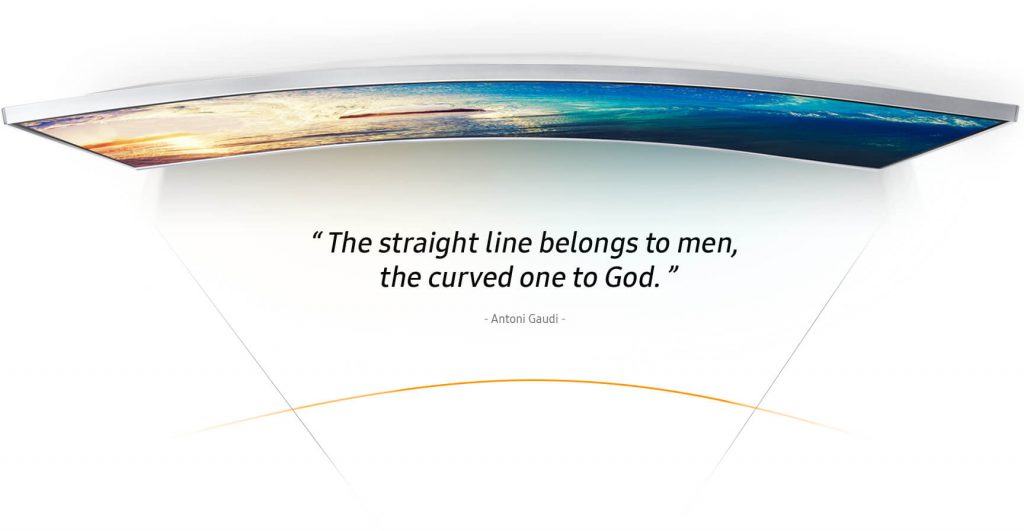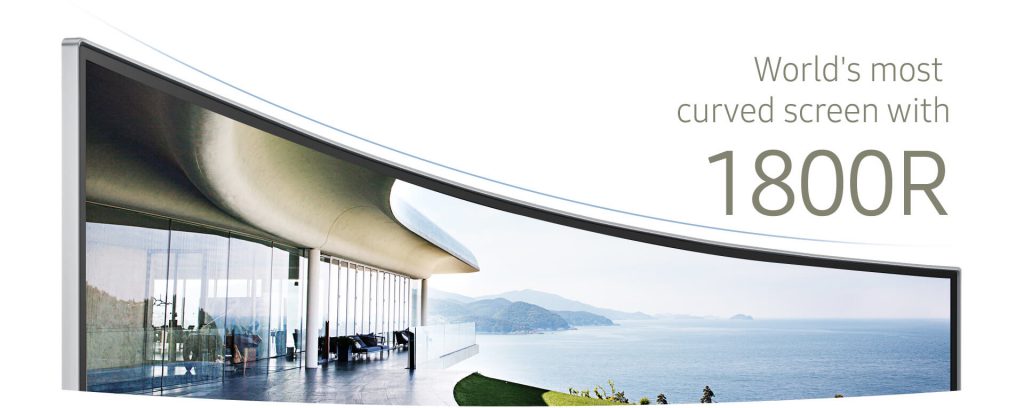Samsung’s Latest Screen is Ahead of the Curve
Samsung has released what is now the world’s most curved screen.
Designed with viewer comfort in mind, its edges and center are a more uniform distance from your eyes, offering the most comfortable viewing experience and reducing eye strain when viewing for extended periods.
Today digital technology is ubiquitous in our work lives and in our social lives. Digital displays have literally transformed the way we do things and this is particularly the case in the workplace. Adults in Britain on average spend nearly nine hours each day looking at a screen. That adds up to over 10,000 days over a typical 80 year lifetime. In fact, according to one recent study we spend more time on media devices than we do asleep so it’s unlikely that our usage of digital displays will decline any time soon.

Many of us use digital displays as part of our jobs and suffer no ill effects. However, inefficient configuration of a workstation can result in eye strain, backache, or in some cases, repetitive strain injury. Many companies are careful to ensure that workers use computers and the associated displays correctly. However, what is often given less consideration, is the stress that results from performing intensive search and navigation tasks – tasks that can strain the eyes and also strain us mentally. These tasks frequently involve switching between multiple windows that are rich in information content.
With the ever-increasing amount of digital information, displays are getting bigger. A number of studies have concluded that using a large display enables improved user performance when compared with using a small display. We know that many users, especially those that work in data-intensive fields, have resorted to using multiple screens.
Those that have moved to multiple displays invariably say they will never go back to a single display. The use of two displays is very common because almost all desktop computers can easily accommodate two displays without any modification to the computer hardware.

Reports that show that larger displays are more effective than smaller displays also identify that using a single large display is better than having several smaller ones. For displays in the workplace at least, where mobility is not an issue, it really does seem that bigger is better.
However, as an imaging scientist and Professor of Colour Science and Technology, I am aware of the technical and usability problems that using the wrong type of technology can lead to.
Modern displays are designed to be viewed at right angles to the plane of the screen. The larger the display, the greater the distortions in colour and text that occur towards the edges. These distortions can themselves be a source of eye strain and could reduce user performance and user satisfaction. That is why, as a professional imaging scientist with over 30 years’ experience, I am surprised that curved displays are not a regular fixture in the office.
For more information read the full “Ahead of the Curve Brochure”